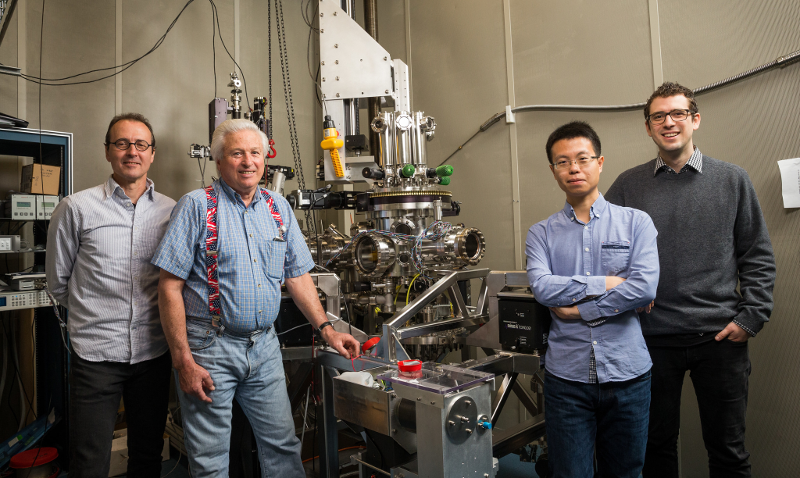 EMERGING TECH
EMERGING TECH
 EMERGING TECH
EMERGING TECH
 EMERGING TECH
EMERGING TECH
Among the numerous inventions that IBM Corp. has racked up over its more than centurylong history are DRAM memory chips, the disk drive and several other foundational components of modern data storage. On Wednesday, the company added another breakthrough to the list by revealing that it has managed to encode information into a single atom.
The IBM Research team behind the project (pictured) published the details of their effort in this week’s edition of the science journal Nature. For the storage medium, they used an atom of the rare earth element holmium, which is employed in a variety of scientific and industrial applications including nuclear reactors. It stands out for having the highest magnetic strength on the periodic table, a property that Big Blue’s researchers exploited to mimic the behavior of a bit.
The team placed their holmium atom on a surface made of magnesium oxide to produce magnetic bistability, a phenomenon wherein a particle has two potential magnetic states. They then used a customized scanning tunneling microscope, an invention that happen to have originated at IBM as well and earned its creators a Nobel prize, to run a 150-millivolt current through the atom. The jolt changed its magnetic field, an effect equivalent to flipping the value of a bit in a traditional data storage medium.
From there, IBM’s researchers were able to read the contents of the holmium atom by placing an iron atom in the vicinity that reflected the magnetic change in its own behavior. Developing this sensing approach was an achievement of its own that the team shared in a companion paper published by Nature Nanotechnology.
According to an IBM spokesperson, the breakthrough may one day make it possible to store the more than 25 million songs in Apple Inc.’s iTunes on a device the size of a credit card. But nothing is certain at such an early stage. To make the technology viable for commercial use, the company would likely have to spend years improving its implementation and manufacturing processes.
In the meantime, new alternatives to traditional storage media are already starting to hit the market. One of the most promising contenders is NRAM, a type of non-volatile memory based on carbon nanotubes that can read and write data 100 times faster than flash while providing superior density. Nantero Inc., the startup behind the technology, recently raised $21 million in funding to fuel its commercialization efforts.
Support our open free content by sharing and engaging with our content and community.
Where Technology Leaders Connect, Share Intelligence & Create Opportunities
SiliconANGLE Media is a recognized leader in digital media innovation serving innovative audiences and brands, bringing together cutting-edge technology, influential content, strategic insights and real-time audience engagement. As the parent company of SiliconANGLE, theCUBE Network, theCUBE Research, CUBE365, theCUBE AI and theCUBE SuperStudios — such as those established in Silicon Valley and the New York Stock Exchange (NYSE) — SiliconANGLE Media operates at the intersection of media, technology, and AI. .
Founded by tech visionaries John Furrier and Dave Vellante, SiliconANGLE Media has built a powerful ecosystem of industry-leading digital media brands, with a reach of 15+ million elite tech professionals. The company’s new, proprietary theCUBE AI Video cloud is breaking ground in audience interaction, leveraging theCUBEai.com neural network to help technology companies make data-driven decisions and stay at the forefront of industry conversations.